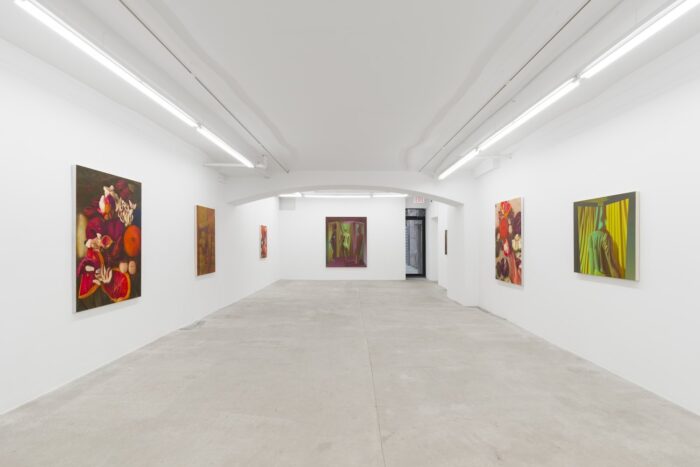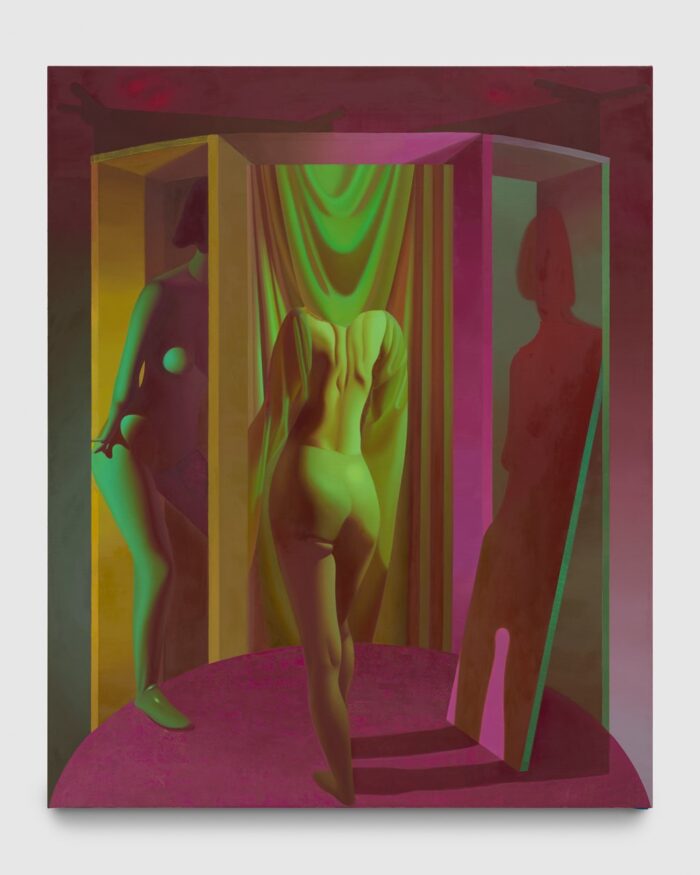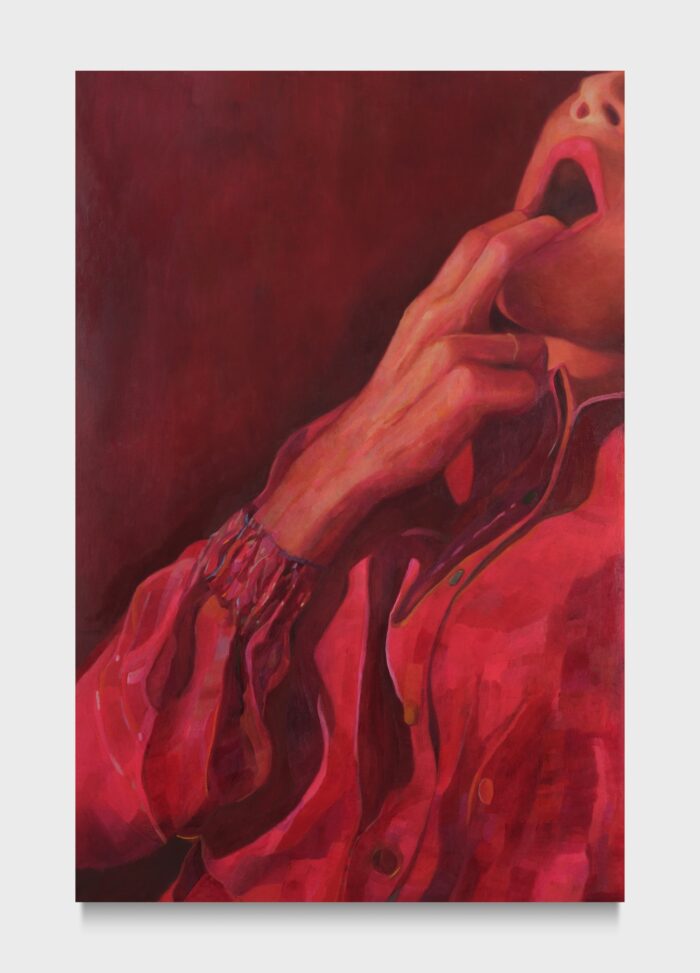
Tableaux Rosa at Lyles and King Gallery
August 29 – October 5, 2024
All images courtesy of Lyles and King Gallery
Kate Meisner and Regina Parra’s joint show, Tableaux Rosa, at Lyles and King Gallery in Chinatown, Manhattan, excels technically and in depicting female sexuality. Both women are painters with drastically different styles, but the exhibition finds unity in theme.
Meisner’s paintings depict feminine forms in cool-toned liminal space. The figures’ smoothness and the light source’s harshness turn the female body into an object. In contrast to the objectified sexualization of women’s bodies throughout much of art history, Meisner’s figures are pushed so far into objecthood that they are de-sexed.
 Greenroom (2024) is one of Meisner’s larger pieces in Tableaux Rosa, and exemplifies her style. The painting depicts two women in what appears to be a geometric dressing room. A curtain obscures one woman’s face, and the other woman takes an anticipatory stance, hiding her face behind the dressing room wall. The women’s bodies smooth out and lose their definition at the extremities, becoming mannequin-like. Light and color play an integral role in the painting Greenroom, using hues of purple and green. The contrast in the hues allows for dynamic and dramatic use of light, and also helps emphasize the smoothness of the figures.
Greenroom (2024) is one of Meisner’s larger pieces in Tableaux Rosa, and exemplifies her style. The painting depicts two women in what appears to be a geometric dressing room. A curtain obscures one woman’s face, and the other woman takes an anticipatory stance, hiding her face behind the dressing room wall. The women’s bodies smooth out and lose their definition at the extremities, becoming mannequin-like. Light and color play an integral role in the painting Greenroom, using hues of purple and green. The contrast in the hues allows for dynamic and dramatic use of light, and also helps emphasize the smoothness of the figures.
On the other hand, Parra’s paintings are openly sensual but mostly suggest the body instead of depicting it candidly. She creates soft, wet tableaus of yonic fruit with expressionistic elements to imply sexuality and titillate the viewer. Her paintings are of open indulgence, as the artist is influenced by the hedonism of “Pagan Eroticism”. The works shown in Tableaux Rosa emphasize this as the collection is titled Bacante from Euripides’ play “The Bacchae.”
 One piece of Parra’s stands out in particular. But I to you offer a white goat and I will pour wine over (2024) is the only piece of hers that depicts only a figure. Unlike the other fruit tableaus, a portion of a woman’s body pulling her mouth open with her hand is portrayed. It ups the ante on the sexual nature of Parra’s paintings. But I to you offer a white goat and I will pour wine over is a portrait of submission, which is also implied by its title. The woman appears to be offering herself to someone else’s desires; she is the sacrificial goat. The title of the painting may also be referencing the practice of scapegoating in many ancient cultures. Despite diverging from Parra’s other works in the exhibition, the piece still maintains her style. While leaning towards realism, But I to you offer a white goat and I will pour wine over incorporating expressionistic brush strokes to add movement and texture to the painting.
One piece of Parra’s stands out in particular. But I to you offer a white goat and I will pour wine over (2024) is the only piece of hers that depicts only a figure. Unlike the other fruit tableaus, a portion of a woman’s body pulling her mouth open with her hand is portrayed. It ups the ante on the sexual nature of Parra’s paintings. But I to you offer a white goat and I will pour wine over is a portrait of submission, which is also implied by its title. The woman appears to be offering herself to someone else’s desires; she is the sacrificial goat. The title of the painting may also be referencing the practice of scapegoating in many ancient cultures. Despite diverging from Parra’s other works in the exhibition, the piece still maintains her style. While leaning towards realism, But I to you offer a white goat and I will pour wine over incorporating expressionistic brush strokes to add movement and texture to the painting.

Overall, the show portrays the complications of female sexuality: both existing as a sensual being and being disconnected from one’s sense of sexuality. One striking feature of the exhibition is that none of the works feature faces, separating the depicted and implied figures from subjecthood.

